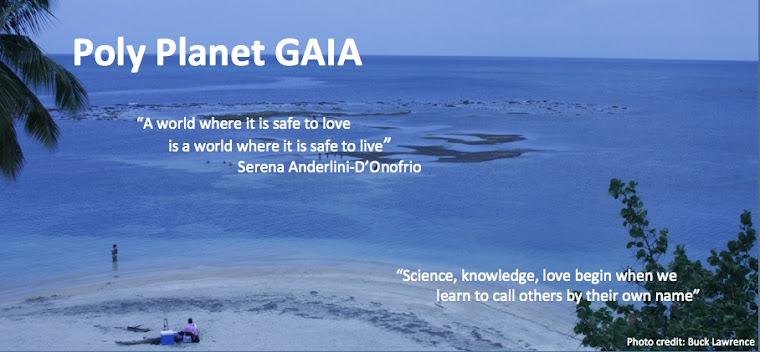“when bisexuality is “real” (in both a symbolic and a material sense), then the nature of love changes too . . . from an exclusive, dyadic system to an inclusive one that expands beyond the dual and into the multiple”
from Bisexuality and Queer Theory, “Introduction"
There’s news about G. She has been enjoying the tropical summer and has been reading.
She called me, “the summer has been beautiful” she said, “my first here, dressing up funny and enjoying a laugh with a bunch of local people.”
“What kinds of people?” I asked.
“All kinds, sexual diversity is exploding here, it must be the Spain effect, you know: Spain becoming so progressive in all kinds of queer issues. All across Latin America you can feel it: people are coming out, they are coming together, there is effervescence, excitement, thriving communities--I can’t believe it!”
“And what have you been doing?”
“Exporting bi and poly ideas, getting a good listening, feeling more situated, modeling three-way hugging and kissing.”
“And what else?”
“Well, you know what I do, what really reconnects me to myself: a good book! The kind of thing that really makes you feel connected with the person who wrote it, with the experience--that gives you that sense of symbiosis and synergy. I found several of these, bi books.”
She has been reading them with Jonathan Alexander, her colleague from UC Irvine, she explained, co-editor of the collection Bisexuality and Queer Theory, to be published soon.
“There was first a cluster of three, he sent me the draft, I read it, wrote into it, thought of two more books, added into the text then sent it back to him. He moved around some things: it was symbiotic the way our minds connected as we did it. And at one point it just flowed, it was perfect: something neither he nor I could have done alone.”
“The power of synergy,” I commented.
“You got it! That’s how we came up with the fiveway review you get here, courtesy of Routledge, the collection’s publisher. A constellation of books that love each other, and complement each other, and argue with each other, and get along with each other, like partners in a poly pod.”
G was thinking. “What’s your mind up to?” I asked.
“Have you heard of the latest poly feature on Newsweek? It was all over the news.”
“Oh yeah,” I reply, “So wonderful: filmmaker Terisa Greenan, in Seattle, revealing the configuration of her real life--not just film. Telling it like it is, modeling the beauty of what she and her partners have been building, offering it as a gift for the future, for a sustainable way of doing partnerships and relationships. What about it?”
“Well, it’s a bit like our fiveway review: first a cluster of three, then two more join the group.”
“But G! These are people, not books!”
“I know, I know, but books often express who we are most truthfully, they speak for us to the world and the future.”
“Ok, ok, you’re back on your literary spin. How incorrigible! I get it. And yes, it’s true, a pentagram, a cluster of five, it’s open, it’s abundant, it’s balanced, it’s one and many, like a star: there is magic to it.”
And so we decided to offer these book reviews to you.
The Constellation:
- Steven Angelides, A History of Bisexuality. University of Chicago Press, 2001. 281 pages (with index)
- Clare Hemmings, Bisexual Spaces: A Geography of Sexuality and Gender. Routledge, 2002. 244 pages (with index)
- Jennifer Baumgardner, Look Both Ways: Bisexual Politics. Farrar, Straus and Giroux, 2007. 244 pages (with index)
- Jenny Block, Open: Love, Sex and Life in an Open Marriage. Seattle: Seal Press, 2009. 276 pages (with works consulted list)1
- Beth Firestein, ed, Becoming Visible: Counseling Bisexuals Across the Lifespan. Columbia University Press, 2007. 441 pages (with index)
- Reviews of these books will appear as "Reviews"
- Please note: The time references to some of the G Tales are off because they first appeared in SexGenderBody.
- Reprinted here with thanks to Arvan Reese.


No comments:
Post a Comment